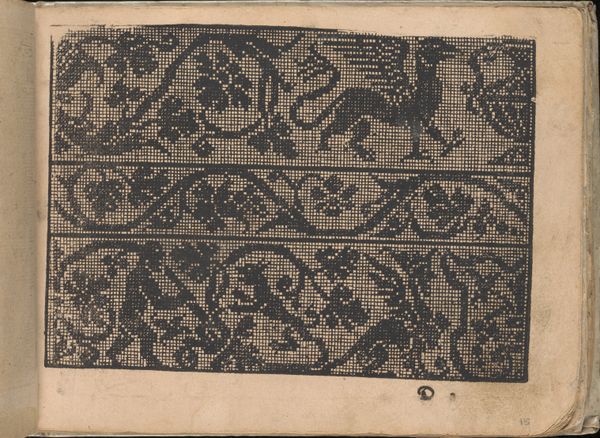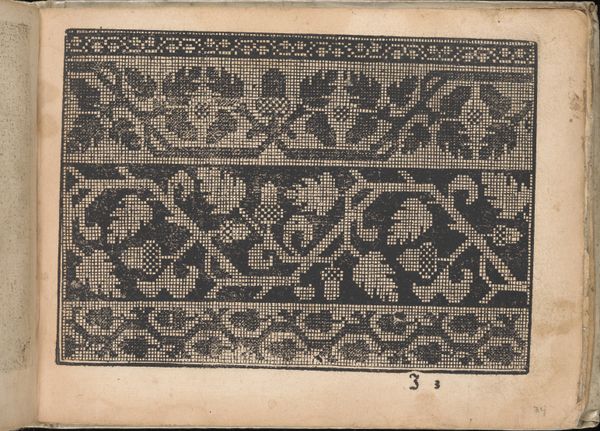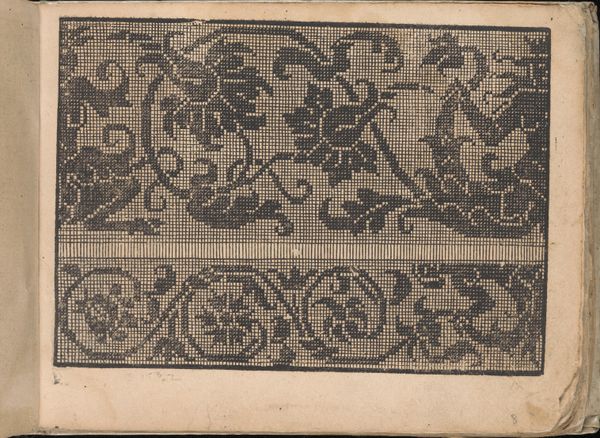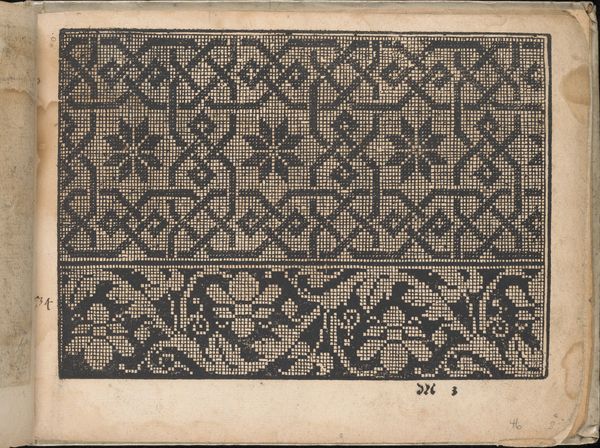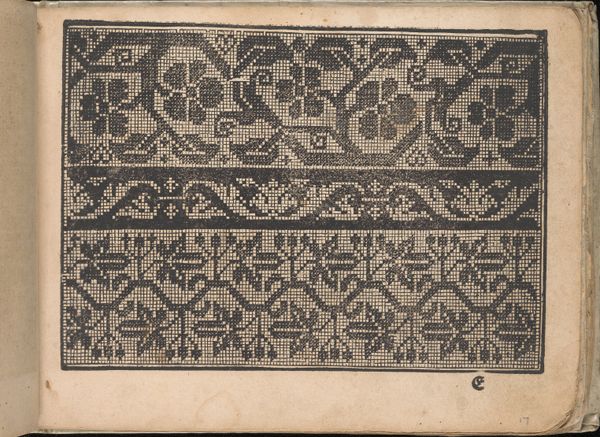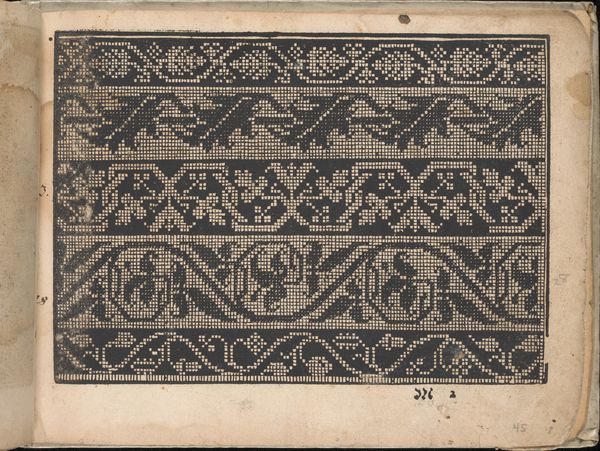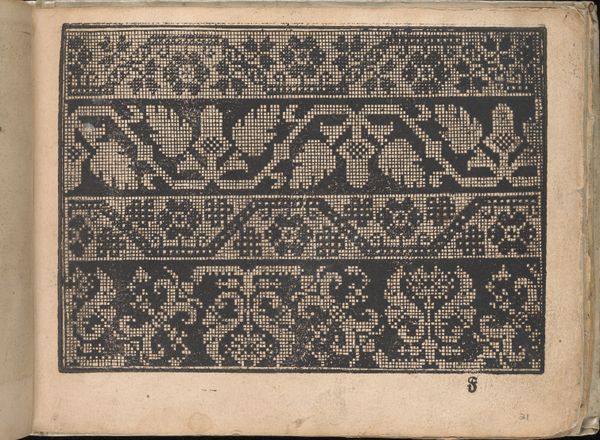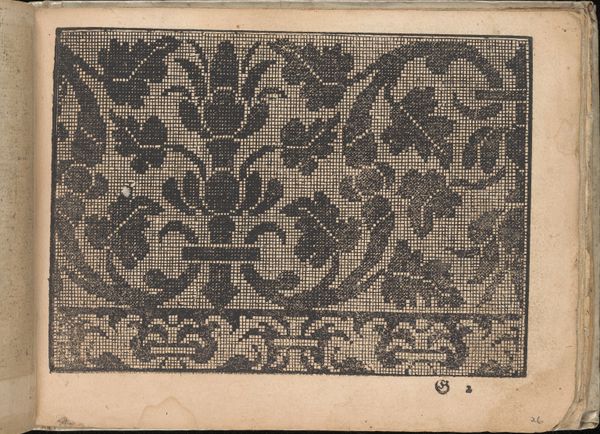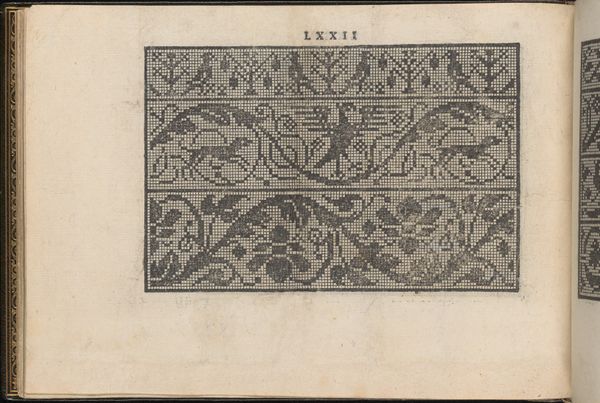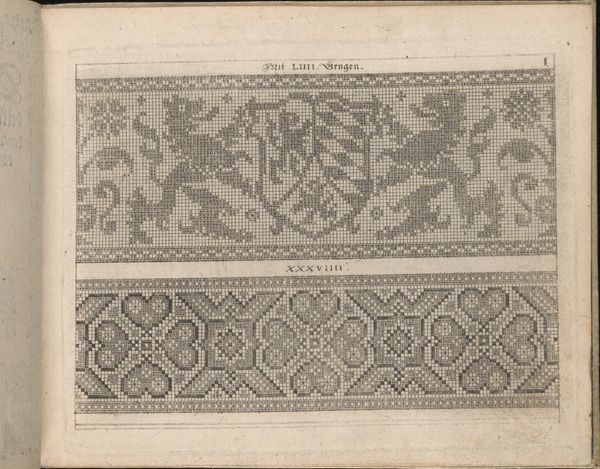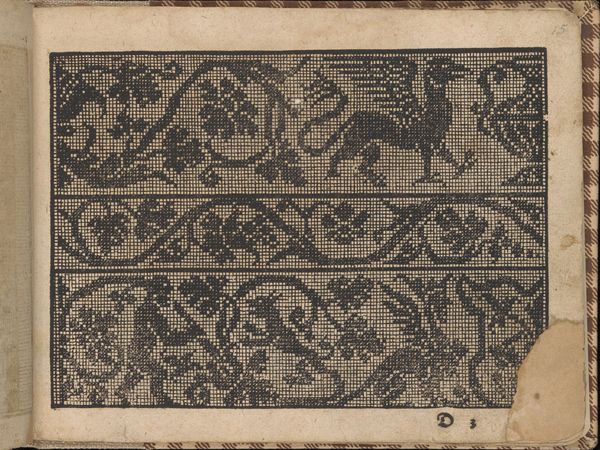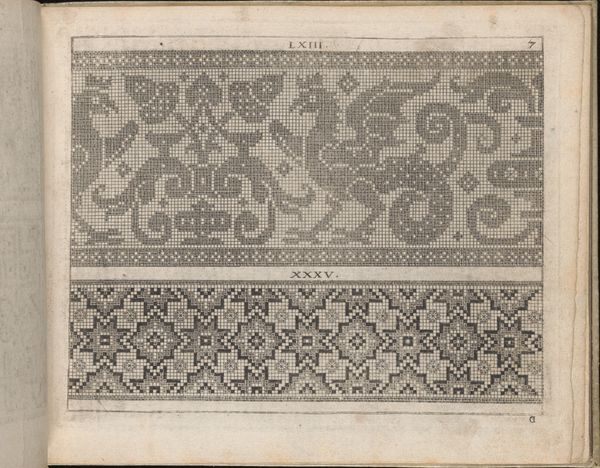
drawing, print, paper, ink, woodcut
#
drawing
#
pen drawing
#
animal
#
ink paper printed
# print
#
book
#
flower
#
paper
#
11_renaissance
#
ink
#
tile art
#
linocut print
#
woodcut
Dimensions: Overall: 6 1/8 x 7 7/8 in. (15.5 x 20 cm)
Copyright: Public Domain
Editor: Here we have a page from *Neu künstlich Modelbuch* created in 1598 by Bernhard Jobin. It is an ink print on paper. The patterns have this graphic quality that reminds me a lot of needlepoint. What is your take on this design book? Curator: What I find striking is how this book embodies a tension. On one hand, it served as a practical guide, offering patterns for embroidery and lacemaking, skills deeply associated with domesticity and femininity. But let’s not forget the socio-economic context. Who had access to these books? Who could afford the materials and the leisure to engage in such crafts? Editor: So, these patterns weren't for everyone? Curator: Precisely. This "model book," while seemingly innocent, reinforces existing power structures. The act of creation, the application of these patterns, was both an expression of skill and a quiet affirmation of social status. These intricate designs acted as visual signals of wealth and privilege. Consider, too, how the circulation of these books fostered a particular aesthetic, potentially marginalizing other forms of artistic expression. Do you think this could apply to today's trends as well? Editor: That's interesting, it shifts how I see something as simple as a pattern book. I will definitely think twice about that now. Thank you. Curator: Of course. Recognizing the layered meanings within art is fundamental to understanding its role in shaping our world.
Comments
No comments
Be the first to comment and join the conversation on the ultimate creative platform.
